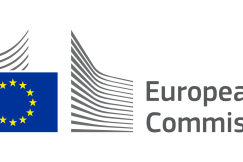Industry reports
16 October 2025
European E-commerce Report 2025
Industry reports
16 October 2025
Retail
Login / create an account to be able to react
-
533

The European E-commerce Report 2025 provides a comprehensive overview of digital commerce developments across 38 European countries, with a particular focus on the EU-27. It highlights renewed growth in B2C e-commerce turnover, steady increases in internet and e-shopper penetration, and evolving consumer behaviour shaped by affordability, sustainability, and innovation. The report also explores the policy landscape, focusing on the need for a level playing field, regulatory simplification, and the growing role of artificial intelligence and sustainable practices in shaping Europe’s digital market.
Netcompany
Topics
Albania
Armenia
Austria
Belgium
Bosnia and Herzegovina
Bulgaria
Croatia
Cyprus
Czechia
Denmark
Estonia
EU-27
Finland
France
Georgia
Germany
Greece
Hungary
Iceland
Ireland
Italy
Kosovo
Latvia
Liechtenstein
Lithuania
Luxembourg
Malta
Moldova
Montenegro
Netherlands
North Macedonia
Norway
Poland
Portugal
Romania
Serbia
Slovakia
Slovenia
Spain
Sweden
Switzerland
Türkiye
Ukraine
Other
Academic / Research and VET Institutions
Business Support Organisation
Company with 250 or more employees
Cluster Organisations
Consumer Organisations
Cultural and Heritage Organisations
Destination Management & Marketing Organisations
EU Institutions
Financial Institutions and Investors
Industry Associations and Chambers of Commerce
Media / Journalist Organisations
National authorities
Networks and Federations / Confederations
Notified Bodies
Regional Authorities
SMEs (a company with less than 250 employees)
-
Ecosystem
-
-
Retail
-
Share
The European E-commerce Report 2025, executed by the Centre for Market Insights of the Amsterdam University of Applied Sciences and jointly published by Ecommerce Europe and EuroCommerce, offers a detailed assessment of Europe’s B2C e-commerce landscape. Following a period of relative stagnation, European e-commerce experienced renewed growth in 2024, with total turnover increasing by 7% to €842 billion, supported by real growth of 4.6% when adjusted for inflation.
The report reveals pronounced regional disparities: Eastern Europe recorded the highest growth at 18%, while Western Europe remained below the European average at 6%. France emerged as Europe’s largest e-commerce market, followed by the United Kingdom, Spain, and Germany. These shifts underscore how market maturity, digital infrastructure, and consumer behaviour continue to shape national performances.
Internet penetration reached 93% across Europe, and 73% of the population aged 16–74 made online purchases in 2024, with Northern and Western Europe maintaining the highest rates. The data suggest that Europe is approaching universal digital inclusion, though significant potential remains in parts of Eastern and Southern Europe.
The 2025 edition also reflects on the sector’s key challenges and opportunities. Policymakers and industry leaders are addressing the imbalance between EU-based and non-EU competitors, advocating for stronger enforcement and regulatory simplification to restore fair competition. Sustainability continues to gain strategic importance, as retailers invest in circular models, eco-friendly logistics, and responsible packaging. Artificial intelligence is increasingly integrated into e-commerce operations—from personalisation and predictive analytics to customer service—although digital intensity among SMEs remains low, with only 6% reaching the EU’s “very high” benchmark.
Amid these transformations, the report underscores the importance of collaboration between industry and policymakers to build a resilient, fair, and innovative digital single market. It presents e-commerce as a vital driver of Europe’s competitiveness, sustainability, and consumer trust in the digital age
Comments (0)
See also
EU gears up to review the Foreign Subsidies Regulation – transparency and fair competition at the forefront
- Categories
Official Launch of the Transition Pathway Stakeholder Platform for the Retail Ecosystem
- Categories
European Small and Mid-Cap Awards 2025
- Categories



